Related Research Articles

The Principality of Sealand is a micronation on HM Fort Roughs, an offshore platform in the North Sea. It is situated on Rough Sands, a sandbar located approximately 11 kilometres (6 nmi) from the coast of Suffolk and 13 kilometres (7 nmi) from the coast of Essex. Roughs Tower is a Maunsell Sea Fort that was built by the British in international waters during World War II. Since 1967, the decommissioned Roughs Tower has been occupied and claimed as a sovereign state by the family and associates of Paddy Roy Bates. Bates seized Roughs Tower from a group of pirate radio broadcasters in 1967 with the intention of setting up his own station there. Bates and his associates have repelled incursions from vessels from rival pirate radio stations and the UK's Royal Navy using firearms and petrol bombs. In 1987, the United Kingdom extended its territorial waters to 12 nautical miles, which places the platform in British territory. As of August 2024, Sealand has only one permanent resident.

Alexander Joy Cartwright Jr. was a founding member of the New York Knickerbockers Base Ball Club in the 1840s. Although he was an inductee of the Baseball Hall of Fame and he was sometimes referred to as a "father of baseball", the importance of his role in the development of the game has been disputed.

Heinz von Foerster was an Austrian-American scientist combining physics and philosophy, and widely attributed as the originator of second-order cybernetics. He was twice a Guggenheim fellow and also was a fellow of the American Association for the Advancement of Science, 1980. He is well known for his 1960 Doomsday equation formula published in Science predicting future population growth.

William Ross Ashby was an English psychiatrist and a pioneer in cybernetics, the study of the science of communications and automatic control systems in both machines and living things. His first name was not used: he was known as Ross Ashby.
The Astor family achieved prominence in business, society, and politics in the United States and the United Kingdom during the 19th and 20th centuries. With German roots, some of their ancestry goes back to the Italian and Swiss Alps, the Astors settled in Germany, first appearing in North America in the 18th century with John Jacob Astor, one of the wealthiest people in history.
The Ratio Club was a small British informal dining club from 1949 to 1958 of young psychiatrists, psychologists, physiologists, mathematicians and engineers who met to discuss issues in cybernetics.

Theodorus van Gogh was a Dutch art dealer and the younger brother of Vincent van Gogh. Known as Theo, his support of his older brother's artistic ambitions and well-being allowed Vincent to devote himself entirely to painting. As an art dealer, Theo van Gogh played a crucial role in introducing contemporary French art to the public.

The Bat is a 1959 American crime-mystery thriller starring Vincent Price and Agnes Moorehead. It is the fourth film adaptation of the story, which began as a 1908 novel The Circular Staircase by Mary Roberts Rinehart, which she later adapted into the 1920 play The Bat. The first film version of the play was the 1926 American silent film The Bat. The film version was adapted by playwright Crane Wilbur, who also directed.

George Vincent was an English landscape painter who produced watercolours, etchings and oil paintings. He is considered by art historians to be one of the most talented of the Norwich School of painters, a group of artists connected by location and personal and professional relationships, who were mainly inspired by the Norfolk countryside. Vincent's work was founded on the Dutch school of landscape painting as well as the style of John Crome, also of the Norwich School. The school's reputation outside East Anglia in the 1820s was based largely upon the works of Vincent and his friend James Stark.

Gulliver's Travels is an American-British TV miniseries based on Jonathan Swift's 1726 satirical novel of the same name, produced by Jim Henson Productions and Hallmark Entertainment. This miniseries is notable for being one of the very few adaptations of Swift's novel to feature all four voyages. The miniseries aired in the United Kingdom on Channel 4, and in the United States on NBC in February 1996. The miniseries stars Ted Danson, Mary Steenburgen, Tom Sturridge, James Fox, Omar Sharif, Peter O'Toole, Alfre Woodard, Kristin Scott Thomas, and John Gielgud.
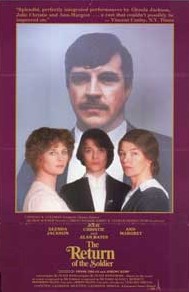
The Return of the Soldier is a 1982 British drama film starring Alan Bates as Baldry and co-starring Julie Christie, Ian Holm, Glenda Jackson, and Ann-Margret about a shell-shocked officer's return from the First World War.

Johanna Gezina van Gogh-Bonger was a multilingual Dutch editor who translated the hundreds of letters of her first husband, art dealer Theo van Gogh, and Vincent van Gogh.
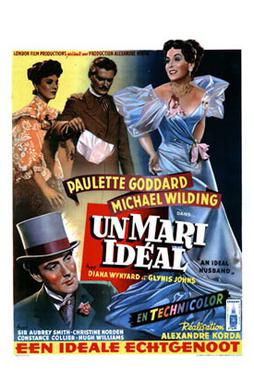
An Ideal Husband, also known as Oscar Wilde's An Ideal Husband, is a 1947 British comedy film adaptation of the 1895 play by Oscar Wilde. It was made by London Film Productions and distributed by British Lion Films (UK) and Twentieth Century-Fox Film Corporation (USA). It was produced and directed by Alexander Korda from a screenplay by Lajos Bíró from Wilde's play. The music score was by Arthur Benjamin, the cinematography by Georges Périnal, the editing by Oswald Hafenrichter and the costume design by Cecil Beaton. This was Korda's last completed film as a director, although he continued producing films into the next decade.
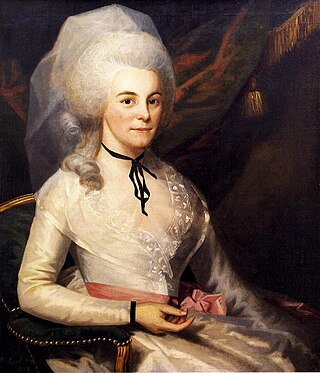
Elizabeth Hamilton was an American socialite and philanthropist. She was the wife of American Founding Father Alexander Hamilton and was a passionate champion and defender of Hamilton's work and efforts in the American Revolution and the founding of the United States.

Cybernetics is the transdisciplinary study of circular processes such as feedback systems where outputs are also inputs. It is concerned with general principles that are relevant across multiple contexts, including in ecological, technological, biological, cognitive and social systems and also in practical activities such as designing, learning, and managing.
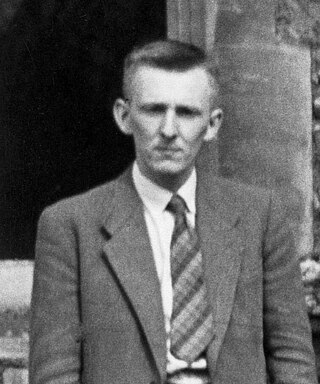
Giles Skey Brindley, FRS is a British physiologist, musicologist and composer, known for his contributions to the physiology of the retina and colour vision, and treatment of erectile dysfunction.
Peter Berners Fellgett FRS, FIEE was a British physicist. He was the professor of Cybernetics at the University of Reading.
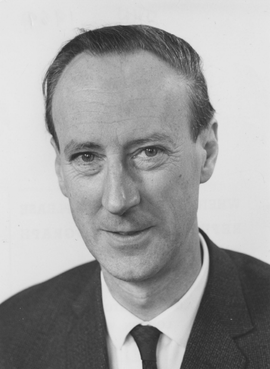
John Hugh Westcott was a British scientist specialising in control systems and Professor of Computing and Automation at Imperial College London.
Albert Maurel Uttley was an English scientist involved in computing, cybernetics, neurophysiology and psychology. He was a member of the Ratio Club and was the person who suggested its name.
References
- ↑ P. W. Nathan, John Alexander Vincent Bates Archived 1 April 2018 at the Wayback Machine , Munk's Roll , Vol. IX, p.32
- ↑ Phil Husbands and Owen Holland, The Ratio Club: A Hub of British Cybernetics, in Husbands, Holland & Wheeler (eds.) The Mechanical Mind in History, MIT Press, 91-148, 2008.
- ↑ Bates, John A. V., and the Ratio Club